 |
| The fiery eyes of this female hunter in cold contrast to the dead eyes of the unfortunate Thompson's Gazelle's. |
Let's face it. Predators rock! Although we will always aim to find and show as many varieties of creatures ranging from frogs to fungus, it is the big cats and other meat eaters people come to Africa to see. And then of course not only getting pics of them but to get unusual images. Once these are in the bag it opens up the field for showing the rest. Below are a few images from the archives.
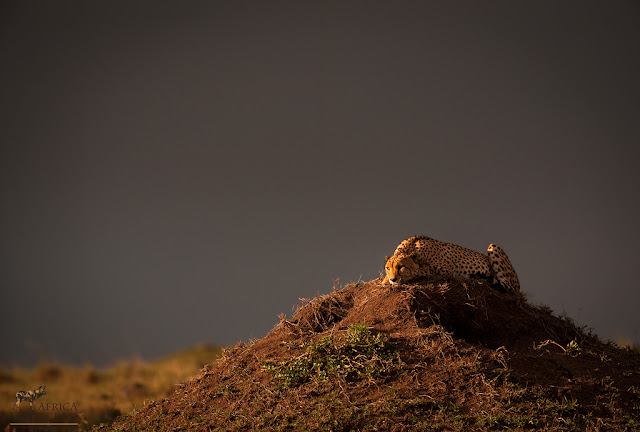 |
| Black sky Cheetah |
Afternoon thunderstorms in the Masai Mara is a common phenomenon during the migration season. These can be pretty dramatic with "black skies" which, for the uninitiated can looked photoshopped. For this image we wanted to emphasize this and deliberately moves slightly further away from the "normal" position. The cherry top was of course the last glint of sunlight bursting through the clouds at the right moment.
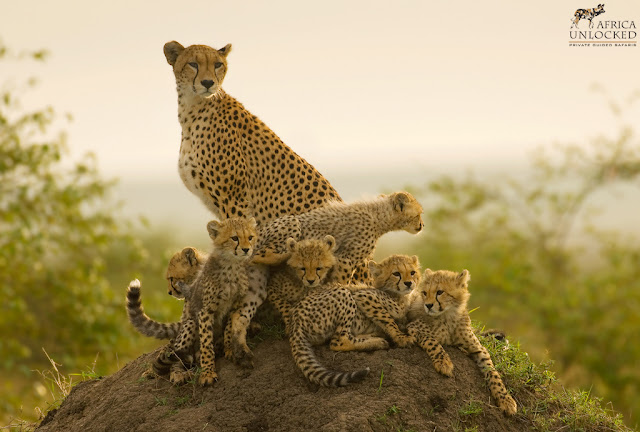 |
| Cheetah Family |
This is one of my first trip with C4 Images. We followed this female cheetah and her six cubs around for a week and although we got some great images, the ultimate one still eluded us. That was, as is often the case, the very last morning. Cheetah on the hunt are fairly easy to anticipate as the walk from one elevation to the next scanning for prey. As it was early morning we went for a back-lit shot. Everything fell in place and all seven animals climbed up where I was hoping they would. although by now an "old" image it is still a very popular one with photo clients and images libraries. On another note, it was shot with an old Nikon D200, which is by no stretch a top of the range camera. But it shows something very important - its not about the gear!
 |
| Mom on the hunt. |
This female had four nearly independent cubs. Again on the hunt we followed her for an entire afternoon and witnessed a few unsucessful hunts. The image we were after was the entire family together in a tight image. For a brief moment all came in line. What I personally like about in this images is that although the cubs are out of focus, enough of their posture is visible to communicate that they themselves are also on the lookout for prey.
 |
| King of the Kalahari |
Staking out a Kalahari waterhole as the sun crawled over the horizon, all was still except for a pair of ubiquitous Black-backed Jackals. When they all of a sudden perked up and stared across the Nosob river this was the sight that greeted us. A large Kalahari male striding over the dry riverbed leaving a feint cloud of dust in his wake as his paws hit the fine dry earth.
 |
| Turbulent times |
The lion prides of Mashatu is facing turbulent times. A coalition of males coming from Zimbabwe arrived in their territory and killed one of these two young brothers siblings. They will face a difficult time from now on as they will have to evade the three large males. Reinforcing bonds as here will strengthen their relationship which will come in handy when they have to secure their own territory in a few years.
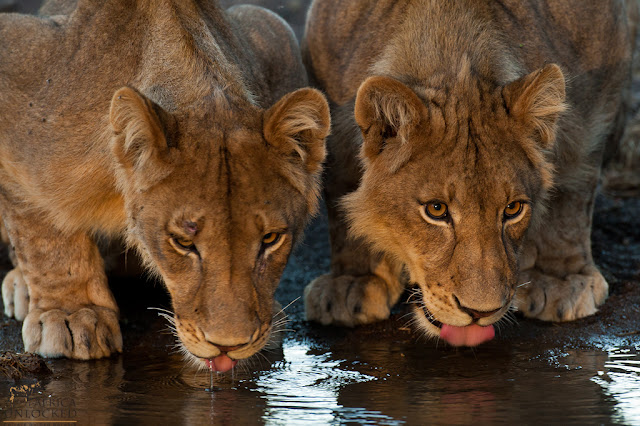 |
| Evening drink |
Lions can be notoriously laze creatures sleeping most of the daylight hours away. As soon as the sun (and all chances of good photography) dips below the horizon the become active and able on to the nearest water. Yet a nifty trick is to add a bit of light from the vehicles spotlights on your subject making for some striking images.
 |
| Early migration |
We had arrived in the Southern Serengeti before the first herds of wildebeest had. Not only had the wildebeest eluded us but lions were also few on the ground. As if on cue, once the first herds arrived we stumbled on a pride of lions with a wildebeest catch. As the sun started heating up the female moved the carcass. All of a sudden new photographic opportunities presented themselves and we frantically moved the car into the desired position. Knowing that the female will do it again we only had to wait a few seconds before she moved the carcass.
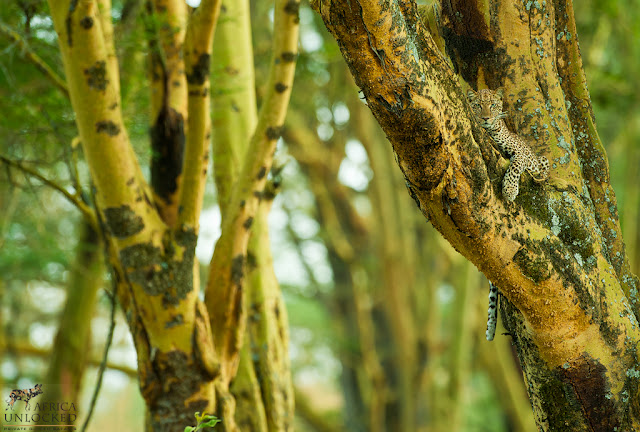 |
| Queen of the forest. |
After a week on safari we pretty much photographed most of the predators. Yet a good leopard sighting evaded us. Second last Game Drive through the forests of Nakuru in Kenya we stumbled upon this scene. Again, refraining to go too tight we included the cat in her habitat. Remarkably, the emerald eyes mirrored that of the lichen on the Fever tree.
 |
| Siblings |
As with the above mentioned lions. Leopards can be equally lazy during daylight hours and only start getting active as night falls, as was the case here. I always keep a small flashlight on me and by adding a small amount of light we were able to balance the last remaining ambient light perfectly with the light from the flashlight when the cats started waking.
 |
| Tuli's young prince |
Early evening, the light from a nearby Game Drive illuminated this young male leopards profile quite dramatically creating a striking profile shot.
 |
| Tufts and Tails |
African Wilddogs can be the most rewarding or most frustrating of species to photograph. they always do something yet keeping up with them can be a challenge at the best of times. In this images again we opted for the less obvious angle, shooting straight into the sun. But the dust kicked up by the feeding dogs and the tufts shining in the sun made for a very cool image.
Early evening, the light from a nearby Game Drive illuminated this young male leopards profile quite dramatically creating a striking profile shot.
 |
| Dogs at play |
As I say, African Wilddogs always seems to be doing something. These two young and boisterous dogs rear up in a play fight as the pack gets ready for the afternoon hunt.
 |
| Serval on the hunt at sunset. |
Never forgetting the smaller cats, a serval on the hunt as night falls over the southern Serengeti. The Serengeti- Mara system must be one of the best places to see and photograph these Cats.
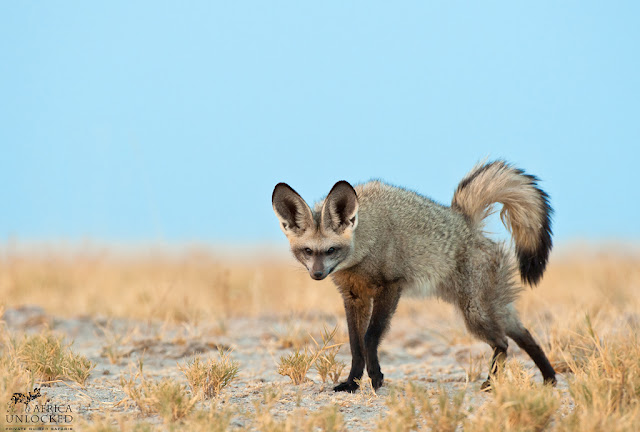 |
| Bat eared fox on the Makgadigadi Saltpans |
One can be forgiven thinking that the desolate and seemingly lifeless expanse of the Makgadigadi pans in Botswana hosts no wildlife. Yet this area was one of the biggest surprises of my guiding career. Hardly ten minutes into our first game drive we encountered this Fox. The dusty conditions filtered the sunlight providing great light for long periods.















